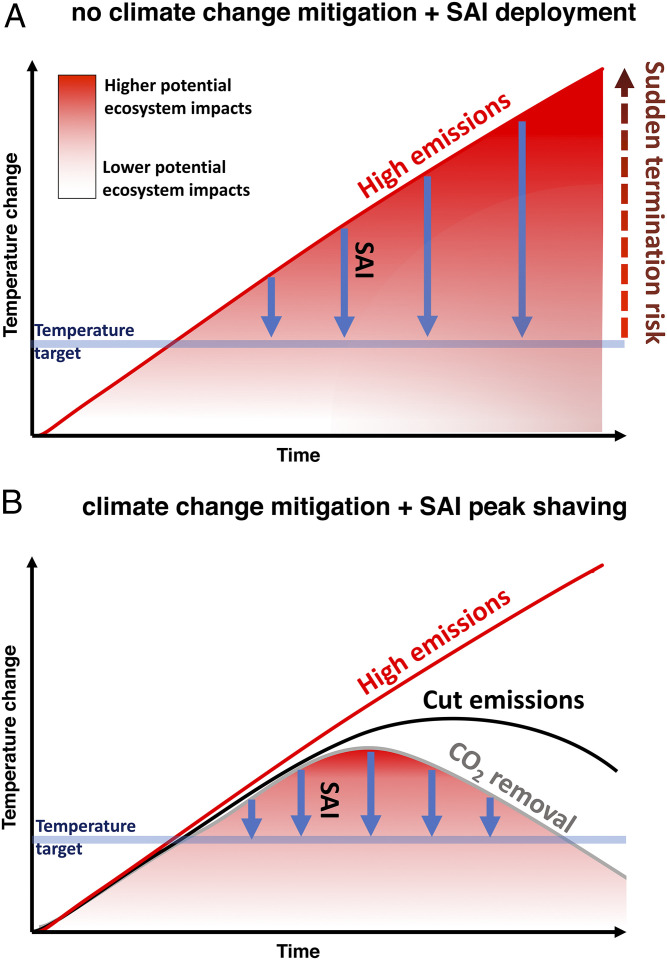Fig. 2.
Potential temperature change over time for two different SAI scenarios. (A) In a future with no climate change mitigation and with SAI deployment, high emissions result in rising temperatures (red line). Increasing amounts of SAI would have to be deployed to reduce temperature (blue arrows) to a specific temperature target (blue line). The risk of sudden SAI termination also increases (red arrow). (B) In a future with climate change mitigation and SAI “peak shaving,” temperature changes are first reduced by a combination of emission reduction (black line) and CDR (CO2 removal, gray line), then further reduced by SAI (blue arrows). The red shaded areas below the two curves indicate the potential overall risk for ecological systems from increased temperature and SAI deployment; carbon emissions alone would not create the same degree of risk reduction as shown in B. We note that SAI is not akin to a global thermostat that would only control global temperatures to remediate GHG-induced warming. GHGs add energy to the system at the surface and throughout the atmosphere, whereas reducing sunlight with SAI only changes the energy balance at Earth’s surface. Furthermore, GHGs operate 24 h a day and all year long, whereas reducing sunlight primarily has a direct impact during the daytime and more so in summer than winter. Data from refs. 142 and 143.

